Infiniti Q50 joins world’s elite sedans
Filed under: Weekly test drives, Autos
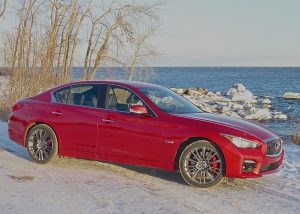
Lean and sleek styling of the new Q50 find a match in the Red Sport’s twin-turbo 3.0 V6 and AWD performance.
By John Gilbert
Even the best cars in the world are met with mixed reactions. But if no car seems capable of being all things to all customers, spend a short time with the Infiniti Q50 and you may decide it comes awfully close.
The Q50 is a sleek midsize sedan, and it can be bought in two forms, which might be considered great and greater. The top model was the one I test-drove for a week in Northern Minnesota, and it was well into winter in Duluth. Which was a good thing, for our test. The car in question was called the Q50 Red Sport 400 AWD, and it had all the goodies Infiniti could fit into that curvacious form, not the least of which was all-wheel drive.
Nissan’s potent 3.0-liter V6 is a new and high-tech powerplant that adds the extra punch of turbocharging. As in high-capacity twin turbochargers, making 400 horsepower with 350 foot-pounds of torque.
A 7-speed automatic transmission doles out all that power to the four wheels, and if you didn’t really care much for maximum fun, you could just leave it in “D” and enjoy its smooth power. Ah, but if you do enjoy driving thrills, you can shift the automatic manually with the best-designed paddle shift levers in the industry.
Companies that install paddles for fingertip shifting almost always mount them on either side of the steering wheel where they can be easily reached by thumbs, ethe right on for upshifting and left for downshifts. That works well, almost all the time.
But if you’re starting up at a T intersection, and you turn 90 degrees while accelerating, you can lose the paddle locations momentarily, usually when you shift hands, and almost always when you lost the exact location of the right paddle. Not with the Q50.
Nissan always has used long, magnesium paddles, attached to the steering column rather than the wheel. That way, if you turn the wheel hard to the left, say, and shift your hands on the wheel, as you run out of revs, you can quickly grab anywhere along the right side and you will find the paddle to upshift. Nissan uses those affixed paddles with the Infiniti Q50, meaning it begs you to shift for yourself.
When Nissan comes out with a new engine, it is always worth close scrutiny, and both engines in the Q50 are new. Without a doubt, the twin-turbo V6 boosts the Q50 to elite sports sedan prestige, comparable to, and maybe superior in some views, to BMW.
However, I am going to make a plea for anyone who is interested to first try the Q50 with the 4. It, too, is turbocharged, and even though it only has 2.0 liters of displacement, it will supply all the enthusiastic spirit you could want. The 3.0 V6 can get up to mid-30 miles per gallon in highway driving; the 2.0 turbo 4 can easily surpass and stay above 30 mpg wherever you drive.
Of course, with all-wheel drive, the Q50 AWD plowed through a 6-inch snowfall we had just up the North Shore of Lake Superior from Duluth, Minnesota, with an ease that was Jeep-like even in such foul winter weather
And here’s the less-known fact: Nissan has an arrangement with none other than Mercedes to build dual-overhead-cam, turbocharged 2.0-liter 4-cylinder engines. I spent some time with the Mercedes crossover SUVs last fall, and whether you drive the GLA, GLC, or the new GLC Coupe, as well as the C or E Class sedans, you start with a base 2.0-liter 4-cylinder turbocharged engine.
What impressed me most when I spent a week driving a Mercedes GLA was that it had plenty of punch. Its computer automatically reset itself for fuel economy each time you started up, and in a week’s time without ever getting it out for a highway road trip, I never once went anywhere up the hills of Duluth when it registered less than 32 miles per gallon.
Even more impressive, after I enjoyed the power, responsiveness and fuel-efficiency of that 4, I learned Nissan had built the engine for Mercedes. With their joint venture, some of these engines are built in various plants around the world. The 2.0 turbo 4 in the C-Class sedan is the same as the 2.0 engine built in Nissan’s Tennessee plant, while the 2.0 4 in the QX30 crossover SUV is built in Germany, then sent to the United Kingdom plant for installation.
It’s confusing, but the Infiniti engine was designed with Daimler as part of the alliance with Nissan, and while Mercedes always has had a legendary reputation with its engines, it is indeed impressive on the resume for Nissan to be building some Mercedes engines. Having the Q50, Q60, and QX30 share a 4-cylinder turbo with the C-Class, CLA, E-Class sedan and wagon, and the SLC roadster is impressive.
The 4-cylinder Q50 starts at $35,000, while the twin-turbo V6 starts at $50,700. The test car I drove had all the specialty Red Sport features. It also had hill-start assist, automatic on-off LED headlights, foglights, brake lights and turn signals. Leather trim on the seats and steering wheel set off the classy interior, which also featured Kacchu aluminum interior trim, rain-sensing wipers, power sunroof, keyless entry and push-button start, Bluetooth phone system, and Bose surround sound.
Two USB ports, cruise, voice recognition for audio, information, and Bluetooth, and the full complement of safety technology also were in place. Dynamic control, brake force distribution, traction control, tire pressure monitoring, and a vehicle immobilizer system all came standard.
The option bin produced the special Red Sport seats, matte-finish natural maple wood trim, adaptive cruise, lane-departure warning and prevention, blind spot warning, predictive collision warning, emergency braking, surround video monitor with moving object detection, backup collision intervention with rear cross-traffic alert, InTouch navigation and voice recognition, and, of course, heated front seats and steering wheel, plus remote start.
All of that lifted the price from the $50,700 Red Sport price to $62,220. That’s a long way up from the $35,000 base price for the 4-cylinder turbo Q50. Which means you can load it up any way you choose. It’s easy to become entangled in the alphabet-soup, or alpha-numeric confusion, of identifying the occupants of Nissan’s luxury branch stable, but we’re now down to the Q50, Q60 and Q70 models among the cars, where the numbers represent size, and are not to be confused with any QX things, such as QX30, QX50, QX60, QX70 or QX80 — all of which are SUVs of ever-increasing size.
As an aside, I can always be accused of favoring the most compact model of a given line, as long as it’s big enough. And in this case, it’s also true, because I found the Infiniti QX30 to be my runaway favorite among Infiniti SUVs, both because of its swoopy, low-slung styling and the inclusion of that 2.0-liter turbo 4-cylinder.
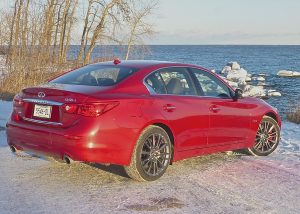
Infiniti makes larger sedans and SUVs, but the Q50 is the sportiest, and, arguably, the most attractive.
It’s hard to say whether consumers are aware of all that intermingling engine-building stuff, but Nissan’s reputation for making strong and sporty engines helped it make the largest gains in sales of any car-maker in 2016. As is the case throughout the industry, trucks led the way. Nissan sold 53,313 trucks in the U.S. in January of 2017, with the Rogue accounting for 28,760 of them, rising 46 percent. Pathfinder increased sales by 13 percent, the Quest minivan 32 percent, and the new full-size Titan pickup up by 195 percent in its reintroduction.
Nissan’s Infinity upscale brand improved SUV sales, too, and overall it increased sales by 36 percent in January 2017 compared to January 2016, with 11,558 sold. It was led by the new nQ50. One test-drive will convince you why.
Challenger GT adds AWD for winter muscle
Filed under: Equinox, Autos
By John Gilbert
PORTLAND, Maine — Driving a powerful muscle car on a curving icy roadway can become a sudden thrill when it breaks traction and starts skidding as if it intends to broadslide into the snowbank on the right shoulder.
“Oops!” just doesn’t quite cover it.
But the instincts gained while driving up and down the hills od Duluth, Minnesota, paid rich dividends. I didn’t yank the steering wheel into the direction of the skid, and I didn’t abruptly hit the brakes. Instead, I eased off the gas slightly while steering in an attitude that let the vehicle’s traction-control straighten us out and continue on our intended path as I eased back into the middle of our lane.
“Good job,” said my co-driver, who had good reason to be less poised than I was as we sailed through the woods just outside Portland, Maine. We were cheating, though, because the red Challenger we were in was a pre-production GT model with all-wheel drive.
It’s not as though we don’t get enough winter weather in Northern Minnesota, but there was no way to pass up this opportunity. Dodge invited a group of auto journalists to visit the rock-bound coast of Maine at the end of January for the first chance to drive the new Challenger GT, which, for 2017, can be bought with all-wheel drive. As such, I felt obligated to push it toward its limits.
The Challenger is a vehicle that is always fun to drive, joining the Ford Mustang and Chevrolet Camaro among the three “ponycar” throwbacks — I call them “future retro” — because they recreate the Trans-Am road-racing heyday of the late 1960s and early 1970s in North America. Dodge calls them “Muscle Coupes,” which is OK, too.
The three were ferocious rivals in road-racing, and among the joys of my sports and auto writing career was to be able to cover that Trans-Am series at places such as Donnybrooke Speedway (now BIR, for Brainerd International Raceway), Elkhart Lake, Bridgehampton and all points where road-racing circuits existed. They were a diversion from the hot-rod sedans of the late 1960s and the spider-like open-wheeled formula cars, with 2 doors and a specific silhouette of long-hood, short rear deck.
The Mustang continued on while the Camaro and Challenger were discontinued along with the Pontiac Trans-Am, Plymouth Barracuda, American Motors Javelin and a few others. But about the time Ford decided to redo the Mustang in a style that recaptured the attitude and demeanor of the 1970 model, Camaro came back out and did the same thing, and so did Challenger.
Dodge’s great-looking Challenger was created by dropping the coupe body on the platform for the larger Charger 4-door sedan, and the shortcut produced a very competitive vehicle. In some ways, it has an edge.
Some say the Challenger looks most like the 1970 car, but in any event it has a larger trunk and a more spacious interior, which can actually house a couple of adults in something approaching comfort. But in all cases, the Challenger, Mustang and Camaro are summertime cars, with front-engine, rear-drive that makes for enormous fun in the summer, spring and fall, but virtually need to be parked in the winter if you live in snowy weather. No traction control system can conquer the glare ice of winter with a rear-driver.
The Dodge Charger added a model a few years ago with an all-wheel-drive system underneath. While the arsenal of Hemi V8s make both the Charger and Challenger fly, the very strong 3.6-liter Pentastar V6 is more than capable in the Charger and Challenger, and works well enough in the AWD version of the Charger that many police departments deploy it to chase — and catch — the bad guys in bad weather.
We should have anticipated this move, then. Dodge has refined that all-wheel-drive system for the smaller Challenger coupe. “We were able to take the all-wheel-drive system from the Charger and use it in the Challenger,” said chief engineer Allison Rahm. “It’s not exactly the same, because we had to refine it in a few ways. We took the Charger Pursuit sedan, used by some police departments, and adapted the suspension, stabilizer bars, springs and steering calibration, and gave it its own vehicle dynamic control that uses the same front-axle disconnect.
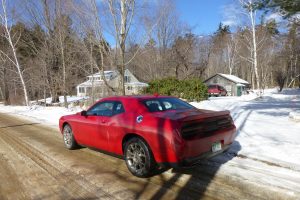
Instead of being skittish, and skiddish, the Challenger GT has newfound stability, even on icy rural roads of Maine..
“We have developed the perspective on a test area we use in Northern Michigan, where they have huge snow-pack fields. We learned we can push the car and stay in control, so it’s fun, cool, and you can drive it very confidently. It goes back to rear-wheel drive when you don’t need it, but in snowy conditions, or when it senses wheelspin, its sensors can send up to 100 percent of the torque to the front.”
How the car is being driven also activates AWD, and the unit only adds 200 pounds to the overall weight of the Challenger, which sits low and doesn’t betray the fact that all four wheels can pull the car.
Ben Lyon showed us an interesting map of the U.S. with a horizontal line across the middle, from northern California to the East Coast. Market research indicates all-wheel-drive models of the Charger and such SUVs as the Durango are up 12 percent year-over-year in sales from last year. On the Charger, AWD makes up 17 percent of purchases altogether, and in the 17 states north of that horizontal line across the nation, the take rate is over 50 percent all-wheel drive on vehicle purchases.
“We also surveyed buyers who looked at the Challenger but didn’t buy,” said Lyon, the Challenger brand manager. “One-third said all-wheel drive was important, and when they stopped considering the Challenger, half of them then bought something with all-wheel drive.”
We had our choice of colors and I took red, instead of orange. Both were stunning. Powering the Challenger is that Pentastar V6, a 3.6-liter unit with 305 horsepower at 6,350 RPMs, and 268 foot-pounds of torque at 4,800 RPMs. More than 90 percent of the peak torque is provided from 1,800 to 6,400 revs which gives you pretty constant power anywhere in the tach’s range.
The only thing that rivals that power is the audio system, which barks through a 506-watt amplifier. A surprisingly large trunk and fold-down rear seat allow you to haul long things, even skis. Specific GT leather bucket seats and trim on the dash and console set the car apart as well.
Naturally, all the goodies boost the price. Our test car started at $33,395 and as-tested it was $40,555.
Stability control and all the assumed connectivity features of Apple CarPlay and Android Auto can be brought to life. Also, the performance information from the Hellcat Trac Pak with readouts on the 8.4-inch center screen let you monitor 0-60 times, G-forces and a launch-control device.
For driving performance, the power is harnessed by the 8-speed automatic with paddle shifters, and if you switch into Sport mode, or drive aggressively, you are immediately in all-wheel drive. Otherwise, your driving style will summon AWD instantly and seamlessly by assessing road conditions.
We found driving the Challenger GT smooth and precise, with the possible exception of my little unscheduled side-skid that threatened the shoulder. So we were ready for the test track, even as the temperature climbed to a less-than-challenging 45 degrees. We would have prefered the harshness of the “Nor’easter” that hit the area one day earlier.
I had the chance to be first out on the well-groomed test track at a road-racing course Dodge had contracted, with a circular stability track, a straight line acceleration stretch, and a small autocross-like circuit that could challenge us for our driving response and the car’s capability.
The stylish 19-inch wheels were shod with some high-performance all-season Michelin tires, and they proved pretty good — but not exceptional to a winter-driving veteran. Michelin might be the best at building tires for long wear and high speed, but to do that, the tread compound is firm enough that it becomes hard — and slick — in severe cold. Such as winter.
The production Michelins worked well to test the car around the circular skid course, where you could jockey the car back and forth and even provoke a bit of skidding, just for fun. After several laps around that, in 6-inch deep snow, we moved over to the auto-cross like course.
The groomer had done a great job smoothing out the trail, and my instructor informed me that I could be confident staying on the power if we got off into the deeper snow. I got off a little, putting the left-side tires into the fringe area, and when I stayed on the power, it went a bit farther off, until it got hung up.
I know enough to stay on the power in moderate snow, and I did that, right until it hung itself up, What fooled us was that the groomer had groomed a bit wider than the outer groove, so when I thought I was still on the track, the left side tires already were off the surface. No problem. Four guys tried to push me out, but we had to summon the groomer, which hooked up to the rear and pulled us out of the snow.
That may have helped set the stage for the rest of . I suggested to Ms. Rahm, the chief engineer, that the Michelins were probably excellent for 90 percent of the all-weather driving Dodge might anticipate for the car’s use, but I would suggest a set of Nokian all-season or snow tires.
I’m guessing that won’t happen, because no automaker builds a car with tires aimed specifically at snow-country. And that’s OK. All-wheel drive already gives the Challenger GT AWD a large jump on Mustangs and Camaros — and virtually all other muscle cars — on snow and ice. With the right winter tires, it could could make hardy drivers park their SUVs.
Durango GT gives Dodge alternative to Jeep
Filed under: Weekly test drives, Autos
By John Gilbert
Jeeps continue to be a dominant force for FCA (Fiat-Chrysler Automobiles), and seem to expand to fill every niche while becoming just about all things to any customer. But if it’s all-wheel drive that makes Jeeps so popular, there are FCA offerings from Dodge to supplement the choices for all-wheel-drive customers.
Logical alternatives range from prominent to obscure. Most prominent among Dodge’s “other” stable is the Durango, which has been streamlined from a larger and bulkier SUV to a sleeker shape with a much-improved interior.
The Durango test vehicle came to me as a Durango GT AWD, an attractive and a little bit sinister when painted Granite Metallic, with a fair amount of black trim. The fact that it came with Chrysler’s redoubtable 3.6-liter Pentastar V6 24-valve engine and an 8-speed automatic with full-time all-wheel drive made me think it was pretty much a Grand Cherokee living in a parallel world in Dodge clothing.
At $40,000 base price the test Durango tallied $48,765, reflecting the full-boat options of GT trim. In Northern Minnesota January, it was a solid performer for traction and power.
The other Dodge vehicle that can get you through a Northern winter on a lighter and less-expensive scale is the Dodge Journey, which does a surprisingly good job of portraying a combination SUV and minivan, in Crossroad livery.
Journeys have a chance at much better fuel economy with the 2.4-liter 4-cylinder. but also can be bought with the 3.6-liter Pentastar V6 and 6-speed automatic transmission. While the Journey can come in front-wheel or all-wheel drive, it has a much more limited tow capacity (1,000-2,500 depending on engine), which is also understandable.
The Journey doesn’t have the Durango’s stylish flair, but it also costs less — $29,595 in base form for the Journey Crossroad Plus AWD, and $34,360 well-equipped. Read more
Cute Fiat 500x handles ‘Minnesota Riviera’
Filed under: Weekly test drives, Autos, Uncategorized
By John Gilbert
If you want to escape from the rigors of Northern U.S. wintertime, what better destination than sunny Italy? It doesn’t seem as logical to go from Italy to Northern Minnesota’s ice-locked clime in January, but that’s what my little red Fiat 500x did for a week.
I knew it was not overmatched, when we got hit with a Duluth-quality blizzard of 6-8 inches of snow, followed by a bone-chilling 20-below-zero frigid spell. My wife, Joan, delivered a bowl of hot oatmeal in the dawn’s early light, and as I finished a follow-up cup of coffee, I stood up, pulled out the Fiat 500x key fob and aimed it out the kitchen window. Push the button twice, watch the lights blink, and notice the exhaust vapor streaming out of the tailpipes. Autostart. What a wonderful invention.
When it was time to leave, I bundled myself into my favorite down parka and headed out, climbing into an already soothingly warm vehicle. With all-wheel drive in the 500x, all was well. Well, almost. The only failure of the Fiat 500x is the inclusion of Nexen tires, which I’m sure are very smooth, round Korean-made tires for nearly every road surface. “Nearly every” does not include Duluth, Minnesota, avenues in wintertime.
Switching the 500x to all-wheel drive didn’t help much, because the Nexens wanted to slither around dangerously anytime you applied throttle. I found, in fact, that leaving the 500x in front-wheel drive worked almost better, because you only had the front tires spinning and slithering instead of all four seeking their own direction.
We have a joint venture here, with an American company contributing a lot to the mix, an Italian company putting it all together, and a Korean company supplying the basic 2.4-liter engine design, and those Nexen tires.
If the 500x had some highly competent all-season or winter tires — my choice continues to be Nokian — the car would have been the greatest winter “sleeper” car on the planet. As it was, an AWD crossover shouldn’t require white-knuckling inside your gloves. Read more
Auto Show season 2017 stirs up new Buzz
Filed under: Equinox, Features, Autos
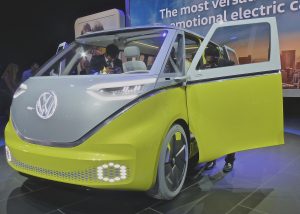
Nobody says it’s a new Microbus, but VW’s concept I.D. Buzz has the shape, with electric power and autonomous drive.
By John Gilbert
DETROIT, MI. — Self-driving vehicles, continued electrification of our global driving future, and an endless stream of sport-utility vehicles of all shapes and sizes are the indelible story of the 2017 North American International Auto Show, which consumed early January, 2017.
High-performcance and luxury vehicles were present also, of course, but nearly all manufacturers were either proclaiming or hinting about electric or autonomous (self-driving) cars.
Those of us who love to drive, to push a car to its limits with skill and dexterity — both yours and your car’s — may recoil at the thought of computer gremlins taking over the operation of our future cars, but that’s where we’re headed and everybody wants to be leading the pack.
For that reason, a highlight of the Detroit show for me was the showing of the I.D. Buzz. Strange name indeed, but it’s just the nickname of a Volkswagen concept vehicle that could well be the long-awaited emergence of the modernized Microbus, that hippie-happy minivan of the 1960s.
The Buzz is an eye-catcher, to be sure, and it’s obviously a concept vehicle because it’s hard to imagine it coming to life in production. But it ties together all of the ingredients for success on the auto show circuit of 2017 — an inventive and retro-flair people-hauler with an interior that could pass as a high-tech den, plus all-electric power with a range of 270 miles on a charge, and autonomous operation.


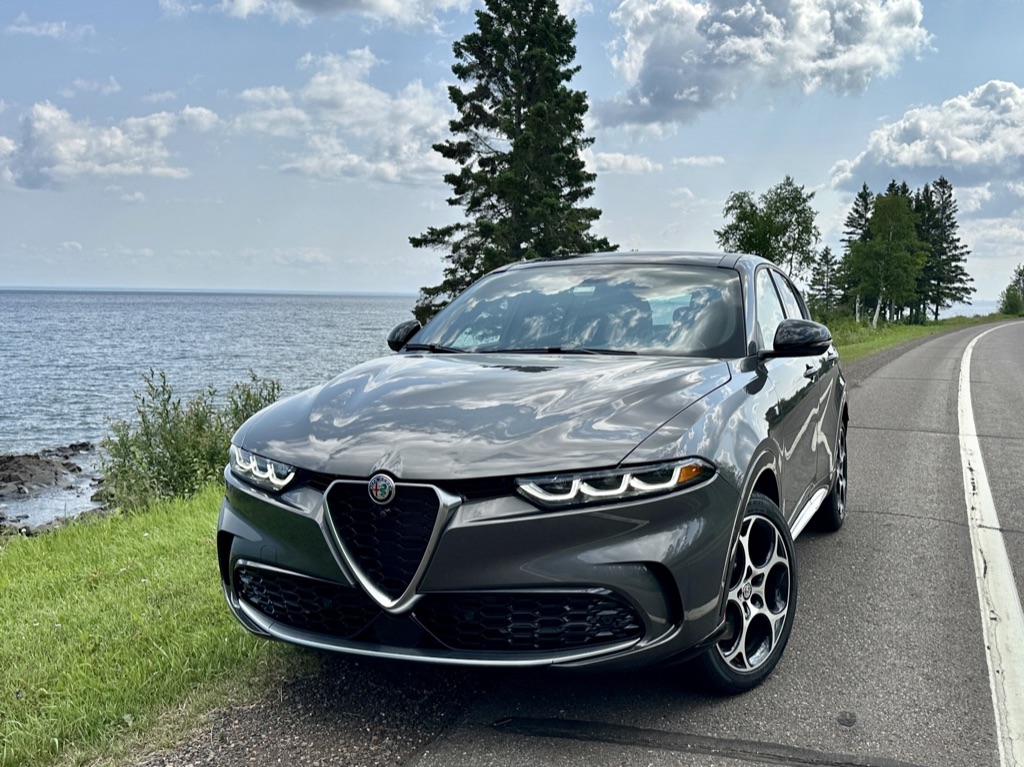


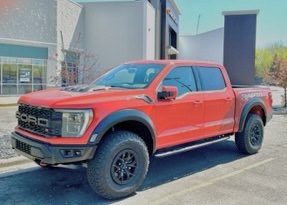

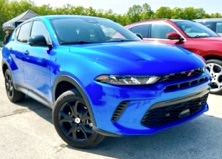


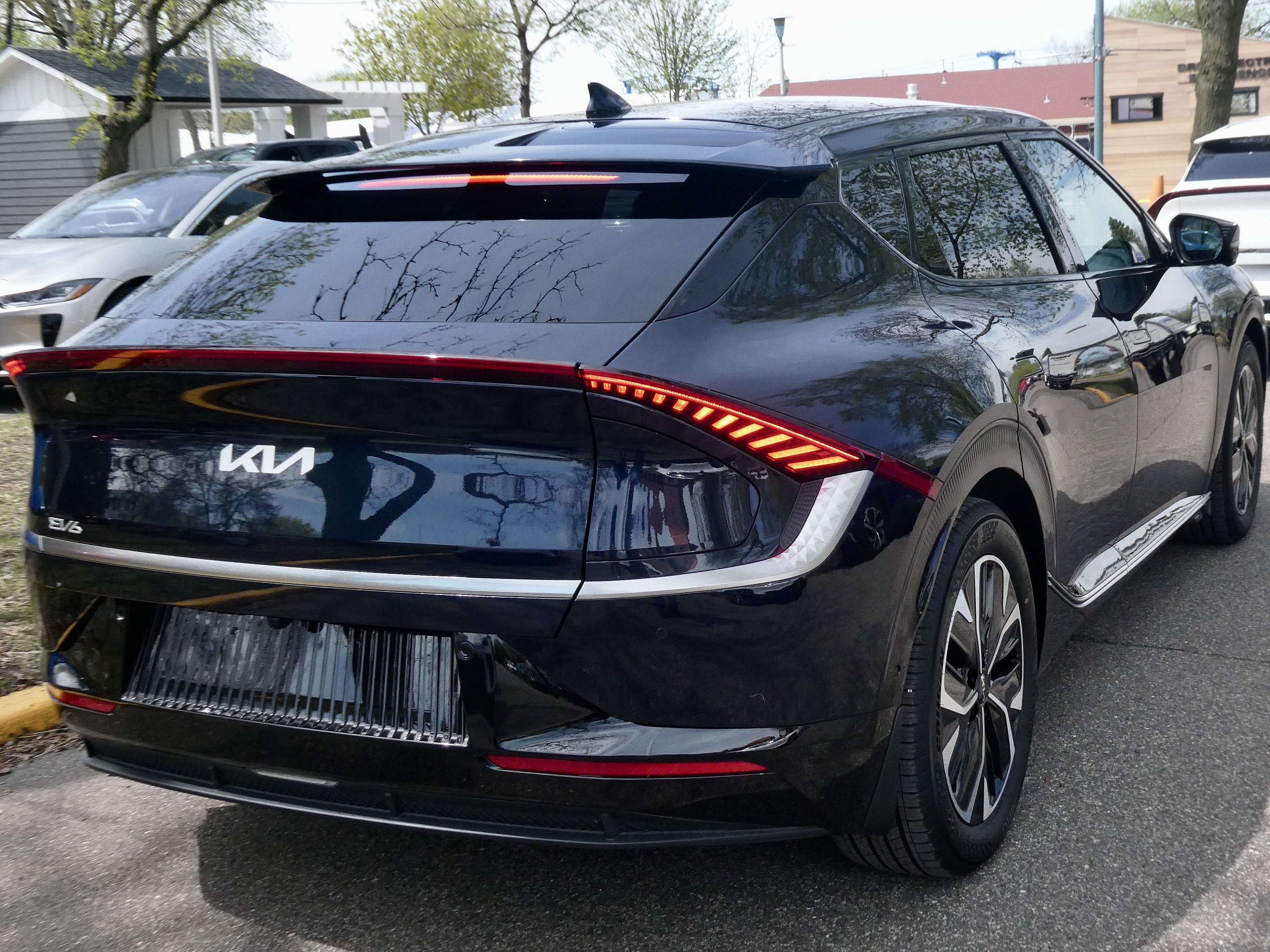
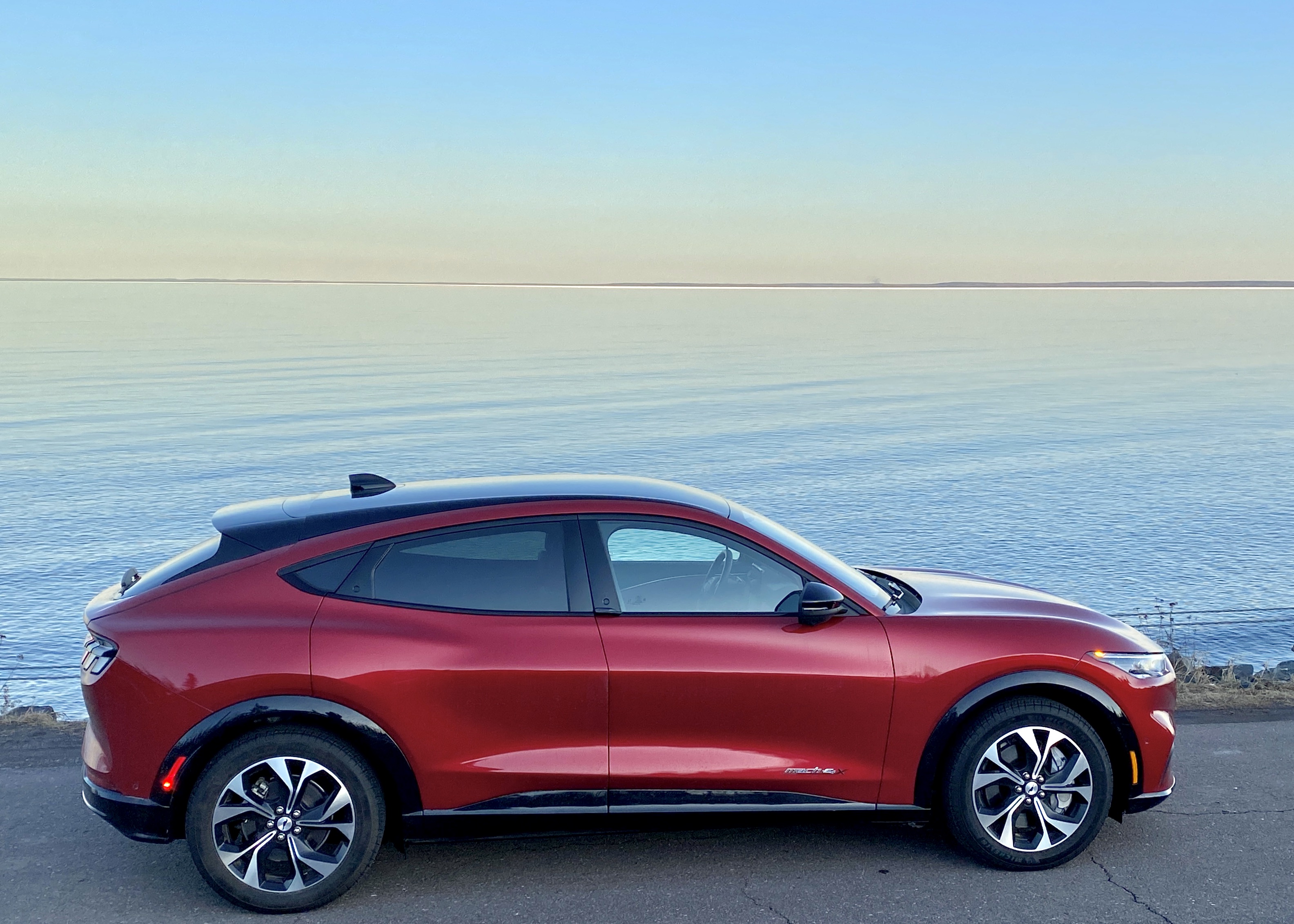
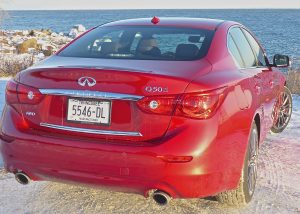
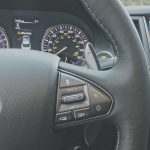
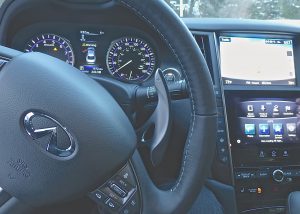
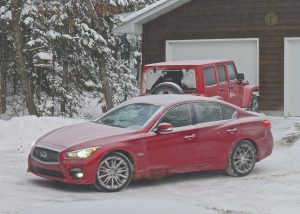

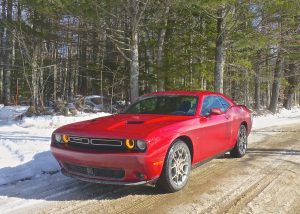
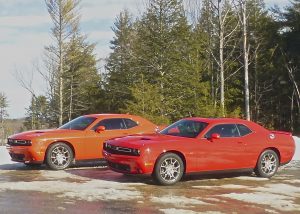
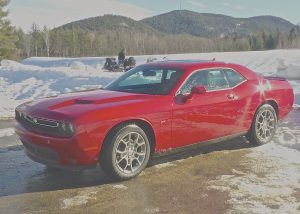


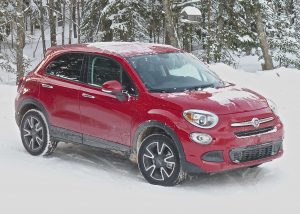

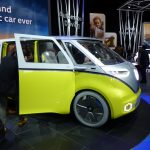


 John Gilbert is a lifetime Minnesotan and career journalist, specializing in cars and sports during and since spending 30 years at the Minneapolis Tribune, now the Star Tribune. More recently, he has continued translating the high-tech world of autos and sharing his passionate insights as a freelance writer/photographer/broadcaster. A member of the prestigious North American Car and Truck of the Year jury since 1993. John can be heard Monday-Friday from 9-11am on 610 KDAL(www.kdal610.com) on the "John Gilbert Show," and writes a column in the Duluth Reader.
John Gilbert is a lifetime Minnesotan and career journalist, specializing in cars and sports during and since spending 30 years at the Minneapolis Tribune, now the Star Tribune. More recently, he has continued translating the high-tech world of autos and sharing his passionate insights as a freelance writer/photographer/broadcaster. A member of the prestigious North American Car and Truck of the Year jury since 1993. John can be heard Monday-Friday from 9-11am on 610 KDAL(www.kdal610.com) on the "John Gilbert Show," and writes a column in the Duluth Reader.